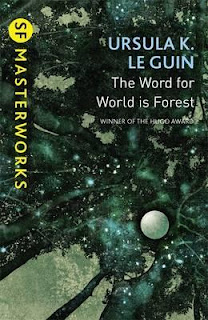Anybody Home? by Michael Seidlinger
Paperback 220 pages
August 2022 Clash Books
This one will be an interesting review. Off the bat, I should mention this is a Clash Books release which means. Author Michael Seidlinger and I share an editor as my book next summer is coming from CLASH. I generally avoid reading and more importantly reviewing books that might be perceived as coming from bias. I just kept hearing good things, very good things. Then I happened to be at the library and saw it on the new release shelf. OK, I am going to do it.
Before it came out editor Christoph Paul explained how this book worked and I admit I was skeptical. A home invasion novel is written in second person speaking to one of the invaders. The experimental form seemed like a huge risk for a narrative.
While home invasion movies are a prolific home subgenre. There are far more movies than books, with Paul Tremblay’s Cabin at the End of the World getting the M.Night treatment that is probably the most well-known. That being said I think the comparisons are a bit overblown to me. Very different books, I have seen some base comparisons.
Anybody Home? Kinda stands alone, I know everyone likes to say their book is like nothing else but in this case, I think Seidlinger has more of an argument than most authors. This novel is a psychological horror that manipulates the reader more directly than ever before because it is talking to us directly. Not everyone has a family but everyone can be the invader so one of the interesting concepts at play is MS is making us the invader. He is making the reader a bystander to the crime, and with each detail of the nameless family, we almost feel guilty watching and judging.
There is no way to talk about this without spoiling a bit of what makes it special. This is in a sense a very experimental horror novel that worms into the reader by looking deeply into the home and family being invaded for reasons I don’t want to spoil that could be anyone. Trust me? Then read this book – it is recommended now I am going to spoil away.
Anybody Home? Is not a light easy read. I am normally a quick reader because often I learn the style of the author and develop a flow. That is impossible with this novel which lacks a normal narrative flow. I had to read slowly and carefully at times. I am not complaining. That is cool. It is not just the second person, although that is part of the reason. The characters simply being Victim #1-4 Or Invader 1-4 were important to the theme but it forced to work harder to keep it straight. That was on purpose and Siedlinger smartly plays with our confusion more than a few times.
It also gives the book a clinical feel, the invaders do this all the time, and they could be watching your family. Indeed Anybody Home is about the family as much as the invasion…
“The important stuff goes right onto the page. After seeing it happen a few times, you won't even second guess their actions. You’ll know the ins and outs of their day.”
It is not just that the invaders watch the family, that makes the novel creepy. It is the idea that someone, a group of someones is watching and studying your every move. It is interesting as the Numbering of characters and lack of names creates a dehumanization That Siedlinger balances with the exploration of their nature. Amid all that, there is one moment I found fascinating.
“The dog,” Number 4 points at the body, “It went missing like a day ago.”
Victim #1 looks over at the body, sighs, “She.”
“What?”
“It’s a she.’ You shouldn’t refer to your pet like it’s an object.”
Amid the dehumanization and the lack of names, this moment strikes me as important. Speaking as someone who would rather misgender a pup than ever call them an “it.” This struck me. The reason I came back to it is that when the characters have no names it adds a certain feeling. It makes for a moment the lack of a name stick out like a sore thumb, it also reminds me of how people can’t take violence towards dogs in media.
I mean the reason is simple dogs are innocent, and like forever children in our care, so that is why people watch armies of humans get destroyed in movies but can’t take one dog hurt. This novel taking the dog first is another smart detail.
Anybody Home? The act of invasion is called the performance, there is a hint of a cult but even when the novel gives details of other performances, the mystery is smartly preserved. This novel is an experiment and I was impressed that Siedlinger was able to stay consistent with the voice of this novel throughout. It is a genius work of horror fiction.
That said the form sometimes challenged me as a reader, just with flow. That is my bad, not a reflection of the novel. Understand this is not a light read, but this is minor nitpick that I just think potential readers need to mentally prepare for. I mean that is a great thing for a horror novel, similar to Ketchum’s The Girl Next Door or Brite’s Exquisite Corpse it is a novel that should come with a warning.
Anybody Home? Is a masterpiece, I don’t say that lightly. Not an easy light read, it is a challenging book in multiple ways but worth the investment.











